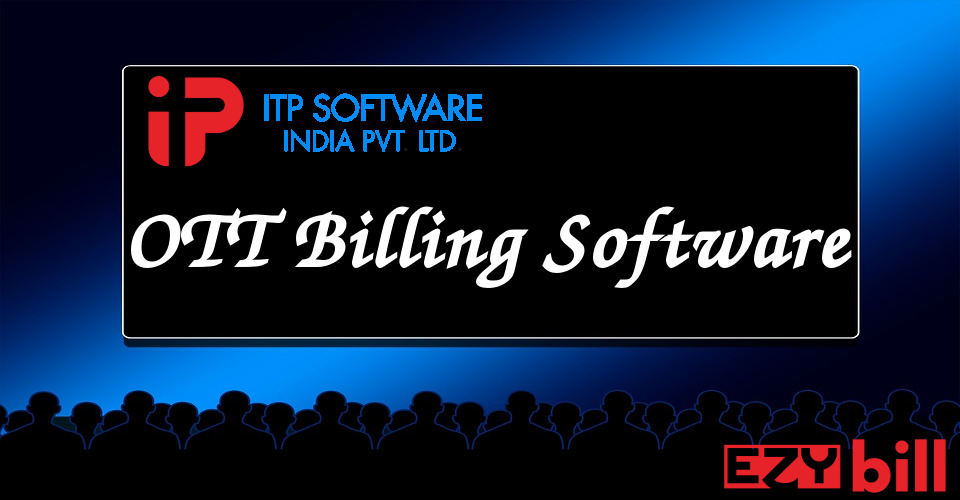Online applications, content, and services are encompassing all segments of business and in addition society and disturb conventional industries. Customers can utilize online video rather than the traditional television, online communications rather than traditional telephone, and can download the films as well as music that was once given on the physical media.
The way toward searching for services is progressively on the web. These progressions come on the grounds that broadband availability gives instant and FAST access to a worldwide system of services and applications providers as well as customers to sidestep the services provided by traditional network operators and to get to national limits and market.
Introduction to OTT
The exemplary meaning of OTT is the distribution of products, for example, messaging, voice, or video bypassing set up mobile or fixed operator retail organizing of these products. An OTT billing software is the application or service that gives a product over a data channel and consequently upsets traditional operator billing models.
OTT competition was initially focusing on messaging, at last, reaches out to voice; now video OTT messaging is surpassing a half of the worldwide messaging volume on a few markets! Illustrations: Facebook and Whatsapp, Netflix, Viber, iMessage, Skype, Google Voice, and so on.
From telcos viewpoint, OTT billing software just performs preferably in the market than telco offerings: YouTube versus MMS, Skype versus video calling.
Rise in Over-The-Top Content
In the present digital age, an ever-increasing number of consumers opt for over-the-top (OTT) services instead of traditional cable or satellite TV. OTT alludes to an application or service that conveys content (audio, visual, etc.) over the internet. Prominent examples incorporate HBO Go, Netflix, and Roku.
OTT billing software utilization is on the ascent to a great extent due to despondent pay-TV customers. 73% feel cable companies are predators as well as take benefit of the absence of pay-tv options available and 53% would leave providers if they had a possibility. The blend of misery with pay-tv organizations and an assortment of survey decisions with OTT services results in pay-TV’s dropping market share. 20 years back, cable TV possessed 98% of the market share – a number that has been almost sliced down the half today.
While OTT billing software subscribers make up the littlest level of the market today, that number is anticipated to soar in the following five years. Customers prefer OTT services for an assortment of reasons, especially due to the quantity of pricing and viewing alternatives offered. They are never again bound to miserly, pricey contracts with restricted choices to browse.
The market and consumers alike are winding up more comfortable with OTT content and services.
Why OTT Players matter?
• Over-the-top application upsets traditional billing models – from telcos or cable/satellite organizations. Cases: Hulu or Netflix for video (supplanting regular Pay-TV) or Skype (supplanting long distance provider).
• The OTT billing solution has prompted the struggle between organizations that offer similar or overlapping services. The conventional ISPs and telcos need to suspect difficulties identified with firms that offer over-the-top applications.
• Consumers till now paying the cable company for accessing the internet, however, they may dispose of their cable package for the less expensive streaming video over the Internet.
Problems Facing OTT Players In Billing
While there has unquestionably not been a lack of news addressing the good features of over-the-top (OTT) content, the reality remains that such services are still moderately new and, all things considered, will without a doubt encounter growing pains.
As additional time passes, we can expect that these crimps will be resolved. Be that as it may, before this happens, it appears to be likely that the genuine guarantee of OTT won’t be acknowledged the same number of customers falter to cut their cords or complement their current TV services because of perceived inadequacies of such services.
Because of that, how about we take a look at three of the top problems facing OTT billing solution providers:
- Fragmentation. Apple TV, Roku, Google Chromecast, Xbox One, Netflix… the OTT market is covered with a wide range of providers and platforms, a large number of which are interoperable with each other for some reason. Here’s a case: As it stands now, HBO GO is at present just accessible to customers who have cable subscriptions as a TV Everywhere choice. Despite the fact that HBO GO was made accessible on Roku players in 2011, customers of the nation’s main cable company, Comcast, are as yet unfit to stack the service on their streaming devices for reasons unknown. It works on different devices, yet that news doesn’t do much to help the owners of the 10 million Roku devices in America. While there have been thunderings about HBO offering a simply OTT benefit sooner rather than later, this case represents the sorts of inescapable issues in the OTT ecosystem. With such a significant number of various players as well as platforms, industry juggernauts need to remember that OTT services should subsist basically to improve their customers’ experiences— not take away from them
- Consumer Conduct. Numerous Americans, particularly the individuals who are more established, have created schedules with regards to their television behaviour. Possibly they’ve not yet aced their ability to utilize more current innovation like Roku players, or perhaps they have their most loved shows set in stone and would prefer not to search for substitute offerings. Conduct can’t be changed overnight. Yet, late research shows that the OTT impression will twofold from 2013 to 2014, developing to 47 million devices. Thus, it won’t be long until that consumer conduct is changed and higher rates of selection happen.
- Infrastructure. While it won’t be a major ordeal in the main cities and the encompassing rural areas, there is as yet a significant number of Americans who live in the nation’s more provincial regions. As indicated by late statistics information, about 60 million Americans—or 19.3 percent—live in these sorts of regions, huge numbers of which do not have the infrastructure important to make an ideal OTT experience. So as to guarantee that all Americans can appreciate streamed OTT content consistently, providers need to ensure that fast connections and expanded transfer speed are accessible to clients all through the nation.
The OTT environment is developing, yet there are as yet a couple of things that must be done before providers will turn out to be considerably additionally ruling powers in the television industry. But those progressions will happen sooner rather than later, which means the eventual fate of the OTT market is more energizing than any other time in recent memory.
The Solution with Ezy
Telecom industry is one of the noticeable businesses that is experiencing the digital transformation. With digitization reshaping the business, telecom operators are confronting challenges from OTT players. In the previous five years, the telecom business is experiencing moderate decrease as core voice as well as messaging businesses proceed to contract and social media platforms, for example, Facebook, WhatsApp and YouTube are generally utilized for individual and professional communication.
The enhancing significance of social media has led operators to give cutting edge engagement platforms, for example, telecom portal (e-commerce website), mobile app, customer web portal, social media platforms, e-mail, the kiosk at public places, interactive voice response, chatbot and click-to-call.
In any case, with regards to resolving queries, customers need to either visit the store face to face or contact the customer care by means of email or telephone. Digitization is set to transform everything.
Telecom operators would now be able to offer innovative real-time self-care facilities to improve customer experience. The advantages of utilizing feature-rich customer engagement platforms are much more than the cost included.
As per Forrester report, 89 percent of subscribers are willing to switch their operators in the event that they are unsatisfied with the customer care. According to Gartner report, cancellation rate can increment by 15 percent if associations neglect to react to customers on social media. In this way, it is obvious that the customers require providing more significance to self-care alternatives, which have a pivotal part to play in enhancing customer reliability and fulfilment.
In this unique situation, it is essential for us to comprehend the advantages of ITP’s billing software in upgrading customer experience. As the business develops, along will come to the complexities which must be made do with the least possible risk and diversion. Ezybill is an OTT billing solution which handles billing, as well as is a total business process application where a client can keep up the information of the considerable number of subscribers, create different users, activate /deactivate the subscribes, manage inventory w.r.to supplier details, make diverse reports, invoicing payments, generate bills & receipts, handle complaints w.r.to different subscribers, areas and so forth. This is a total client relationship management application where the relationship with the customers can be overseen in the best way and administration levels can be observed and overseen till edge.
Author: Sridhar Venkata
Director Sales & Marketing at ITP Software India.
ITP offers solutions to Pay TV, Broadcasting & ISP domains. ITP has earned the distinction of offering the most credible products that help a client enhance and manage operational efficiencies, increase and sustain customer loyalty and ramp up operations.



